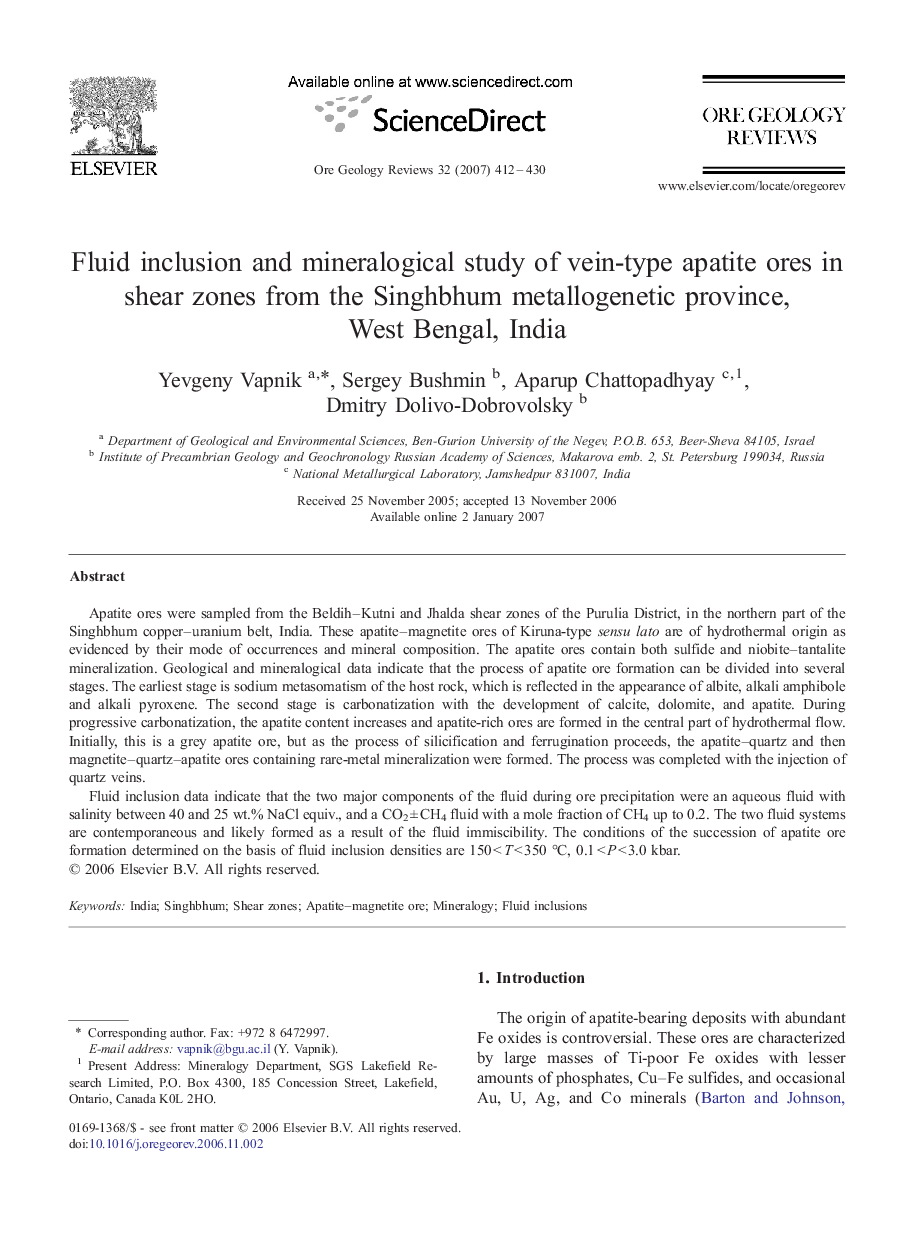| Article ID | Journal | Published Year | Pages | File Type |
|---|---|---|---|---|
| 4697897 | Ore Geology Reviews | 2007 | 19 Pages |
Apatite ores were sampled from the Beldih–Kutni and Jhalda shear zones of the Purulia District, in the northern part of the Singhbhum copper–uranium belt, India. These apatite–magnetite ores of Kiruna-type sensu lato are of hydrothermal origin as evidenced by their mode of occurrences and mineral composition. The apatite ores contain both sulfide and niobite–tantalite mineralization. Geological and mineralogical data indicate that the process of apatite ore formation can be divided into several stages. The earliest stage is sodium metasomatism of the host rock, which is reflected in the appearance of albite, alkali amphibole and alkali pyroxene. The second stage is carbonatization with the development of calcite, dolomite, and apatite. During progressive carbonatization, the apatite content increases and apatite-rich ores are formed in the central part of hydrothermal flow. Initially, this is a grey apatite ore, but as the process of silicification and ferrugination proceeds, the apatite–quartz and then magnetite–quartz–apatite ores containing rare-metal mineralization were formed. The process was completed with the injection of quartz veins.Fluid inclusion data indicate that the two major components of the fluid during ore precipitation were an aqueous fluid with salinity between 40 and 25 wt.% NaCl equiv., and a CO2 ± CH4 fluid with a mole fraction of CH4 up to 0.2. The two fluid systems are contemporaneous and likely formed as a result of the fluid immiscibility. The conditions of the succession of apatite ore formation determined on the basis of fluid inclusion densities are 150 < T < 350 °C, 0.1 < P < 3.0 kbar.
